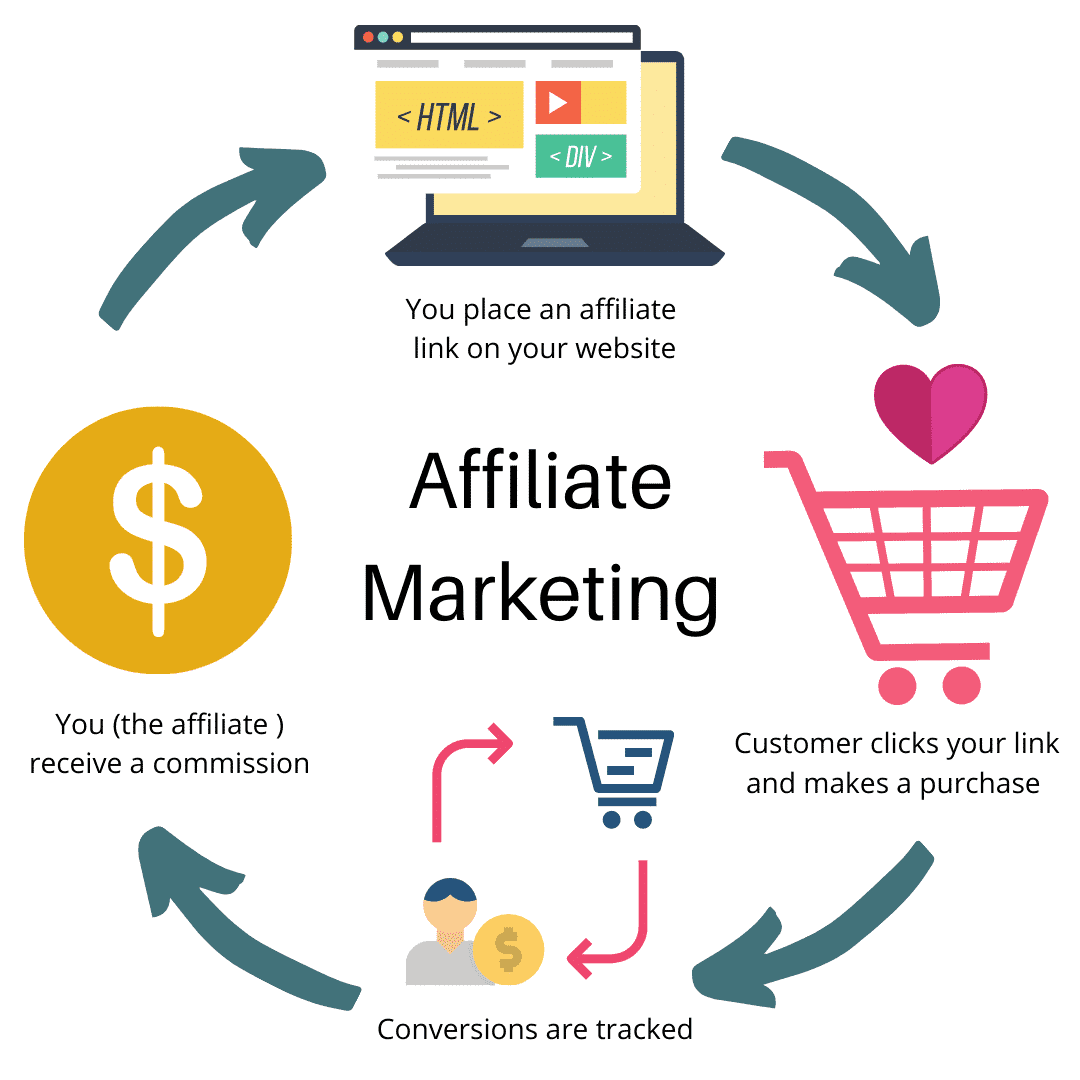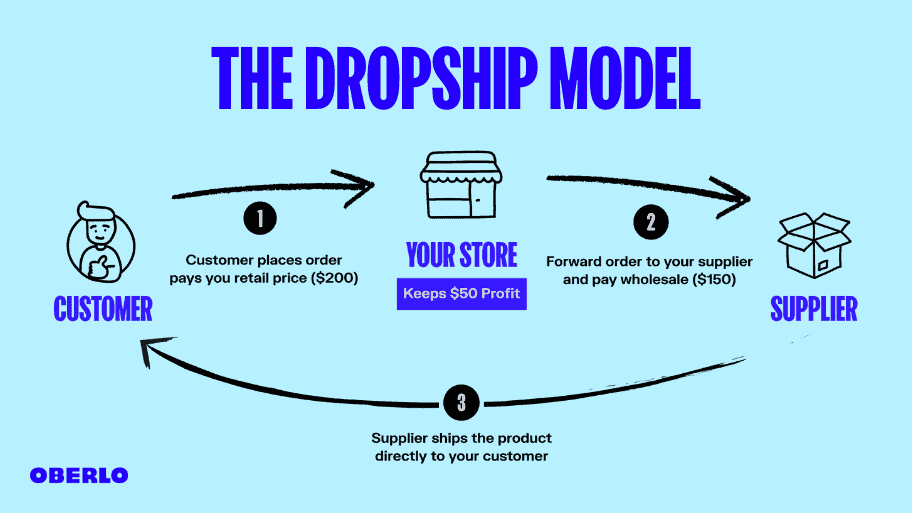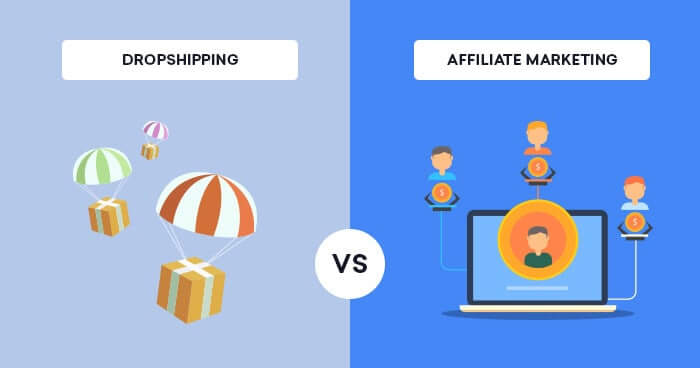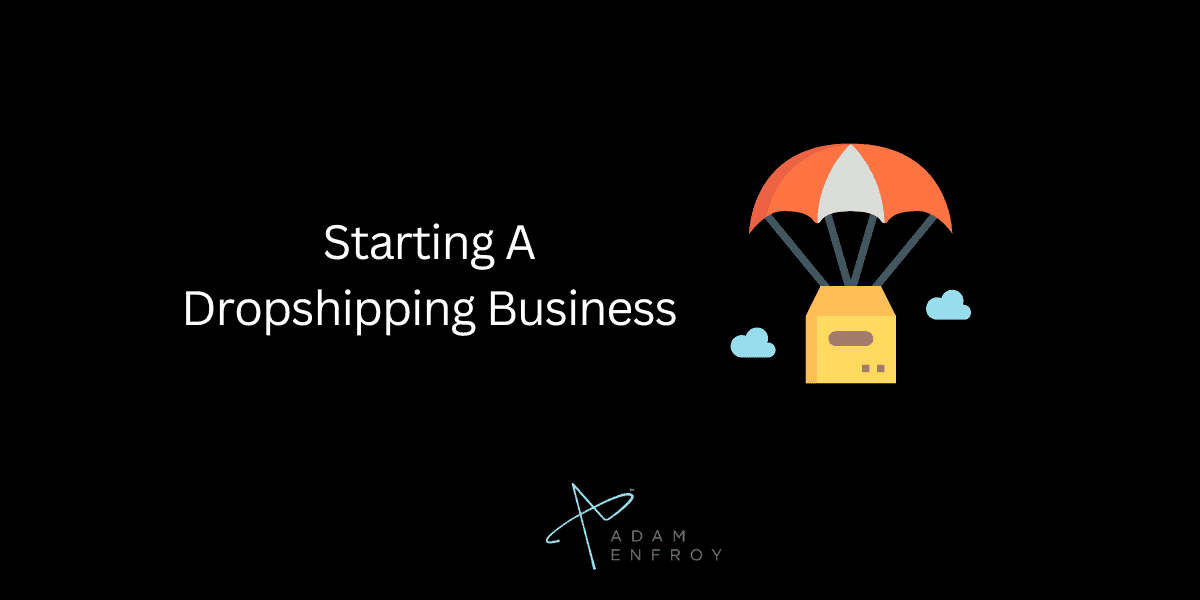Affiliate Marketing vs. Dropshipping – Which Is More Profitable?

Two (super) popular ecommerce models are affiliate marketing and dropshipping.
But what are these business models really about?
Picture affiliate marketing as recommending a bookstore to friends and earning a commission when one of your friends buys a book (or ten) from the bookstore.
On the other hand, imagine dropshipping as running your own online bookstore.
After a sale, your supplier sends the book directly to the customer – you handle no inventory or delivery, yet you are still the business owner.
Both models involve holding no inventory while still benefitting when people buy stuff online – talk about winning in life, right?
In this article, I compare affiliate marketing and dropshipping, covering the following:
- Affiliate marketing and dropshipping in more detail
- The pros and cons of each model
- Which model is suitable for you
- How to start each of these business models
- And more.
- What Is Affiliate Marketing?
- What Is Dropshipping?
- Affiliate Marketing vs. Dropshipping
- Which Marketing Model Is Right?
- Starting An Affiliate Marketing Business
- Starting A Dropshipping Business
- Exploring The Financial Investment
- Customer Service Expectations
- Evaluating The Scalability Of Online Business Models
- Understanding Market Trends
- Wrap Up.
What Is Affiliate Marketing?

Image credit: nichepursuits.com
Affiliate marketing has existed for decades but is still one of the most popular ways to earn passive income online.
As an affiliate marketer, you promote other people’s products (and earn commissions) on your website or social media.
The commission rate varies depending on the product category and the merchant’s rules, but it is usually between 5% and 30%.
One of the benefits of affiliate marketing is that it requires low startup costs.
You don’t need to invest in inventory, storage, or shipping.
Consider joining programs like the Shopify Affiliate Program to leverage this advantage.
All you need is a website or a social media account and a willingness to promote products.
In addition, you have the flexibility to work from anywhere and at any time.
You can choose which products to promote and how much effort to put into each promotion.
To succeed in affiliate marketing, you must create high-quality content that resonates with your audience.
By providing valuable information, you’ll attract a loyal following who trust your recommendations.
You also need to choose the right affiliate programs that are relevant to your niche and have a good reputation.
Some popular affiliate programs include Amazon Associates, ShareASale, and Commission Junction.
What Is Dropshipping?

Image credit: oberlo.com
Dropshipping is another business model that allows you to sell products online without holding inventory.
You build your brand and website with dropshipping products from reputable suppliers.
Whenever a customer buys a product from your website, you place an order with your supplier, who then ships the product directly to the customer.
You profit from the price difference between the supplier’s price and the price you charge the customer.
One of the benefits of dropshipping is that it removes the hassle of inventory storage and shipping.
You don’t need to worry about carrying a large inventory or shipping products.
Your supplier takes care of these tasks, which frees up your time to focus on other aspects of your business, such as marketing and customer service.
Another benefit is that the startup costs are relatively low.
You don’t need to invest in costly inventory or warehouse space.
You only pay for the products that you sell.
In addition, you can choose from a wide range of niche products to sell, which allows you to experiment to find the products that resonate with your audience.
To succeed in dropshipping, build a solid brand and provide excellent customer service.
Work with reputable suppliers who offer high-quality products at a reasonable price.
Some popular platforms for finding dropshipping suppliers include AliExpress, Oberlo, and SaleHoo.
Affiliate Marketing vs. Dropshipping

Image credit: cloudways.com
Here are the pros and cons of these two methods.
Affiliate Marketing Pros and Cons
Pros
You can quickly get started with no certification or licensing requirements with affiliate marketing.
You do not have to invest in expensive courses or take licensing tests to get started.
Instead, sign up for a program, pick products that align with your values, and promote them.
In affiliate marketing, you do not handle customer support.
Your job is to focus on promoting products and services, something you are already skilled at or can improve through practice.
You can boost your conversion rates with the right promotion strategies and marketing plans leading to significant earnings from commissions.
Unlike other businesses, affiliate marketing does not require any upfront costs.
The product creator pays you when they make a sale from your referral link.
Therefore, you can start with minimal expenses, using any budget to create an effective marketing campaign.
Passive income is a unique characteristic of affiliate marketing.
You can earn money passively by promoting a product through your blog or website.
Even if you are not working, your links and content are working for you.
However, to tap into this lucrative stream, you need the right marketing strategy and a platform that attracts interested traffic to the product you are promoting.
Cons
In affiliate marketing, commissions can be small, especially at the beginning.
You may need to work for months or even years before getting a steady flow of income.
Furthermore, with the delay in payment timing, you may need to include contingencies in your budget and remain patient while waiting for the payments to come through.
When you sign up for an affiliate marketing program, you must accept the pricing and products offered.
You have little control over customizing the products or identifying opportunities to reduce prices.
Instead, you have to make do with what you get.
Link removal and hacking are common issues that affiliate marketers face.
The product owners may remove an affiliate’s link from the site or hack it, leading to a loss in passive income.
To safeguard against these challenges, monitor your links regularly and have multiple links for each product.
Affiliate marketing programs have rules and regulations that you must adhere to.
If you do not comply, the program can ban you.
Similarly, you may lose referral income and damage your reputation.
Follow the regulations set out by the product owner to ensure long-term advertising success.
Dropshipping Pros And Cons
Pros:
One of the significant benefits of dropshipping is that you sell products without holding any inventory.
You can set up your store quickly, easily add new products, and test product viability without risking any real money on inventory.
Since your supplier takes care of the product’s delivery and handling, you can focus on building your website, marketing your products, and optimizing your sales funnel.
You also have control over your online store’s branding and pricing strategy, which affects your profit margins.
Cons:
The disadvantage of dropshipping is that you rely on your supplier to fulfill all orders correctly.
You don’t have control over the product’s quality, delivery speed, or packaging, which can affect customer satisfaction.
Your supplier’s inventory availability may also change frequently, affecting your ability to fulfill orders promptly.
Finally, your profit margins can be thin if your supplier charges high shipping or product costs.
Which Marketing Model Is Right?
Dropshipping involves selling products without the need to store them in your inventory.
You act as a middleman between the supplier and the customer, so you don’t have to worry about shipping and handling.
The supplier takes care of the rest.
Dropshipping offers a steady income stream if you keep up with the demand.
You can also build your brand by investing in your website, logo, and marketing.
The primary perk of affiliate marketing is that you can recommend as many products as you want (in theory) as long as they are of good quality.
You can earn a significant commission per sale if you prefer high-ticket items.
There are also no overhead costs, such as inventory; your affiliate partner handles all the shipping and handling.
However, the downside is that you cannot control the product offers.
You can only market the products your affiliate partner has available.
Marketing the products available from your affiliate partner can be a limitation, especially if you have a specific niche that you want to sell to.
One key difference between dropshipping and affiliate marketing is the potential for long-term benefits.
With drop shipping, you can build a loyal customer base that keeps returning for future purchases, leading to repeat business and even referrals.
With affiliate marketing, you’re dependent on one-off transactions.
Yes, you can get high commissions, but you don’t have the opportunity to build a relationship with your audience as you would with dropshipping.
Affiliate marketers must constantly find new niches to market to and keep up with changing trends.
Despite the limitations of affiliate marketing in terms of product offerings, it can still be an excellent tool for brand exposure and popularity.
By promoting other people’s products, you become an authority in your niche by providing recommendations and advice.
In the long term, this can increase brand recognition and audience trust.
Affiliate marketing can also give you access to a broader audience you might not have had before, increasing your online popularity.
Starting An Affiliate Marketing Business

If you want to make money online through affiliate sales, here are the steps to follow:
- Research and select a niche: The first step to launching an affiliate marketing business is choosing a niche you are passionate and knowledgeable about. It helps you create content that resonates with your target audience and positions you as an authoritative source of information in your chosen field.
- Choose your products: Once you have selected your niche, select products that align with the interests of your target audience. Thoroughly research product quality, features, pricing, and customer feedback before promoting a product.
- Establish your platform: You will need a platform to promote your affiliate products. Do this through a website, blog, social media channels, or other online presence. Whichever platform you choose, tailor it for maximum engagement and conversion rates among your target audience.
- Generate content: Creating high-quality content for your website or blog that promotes affiliate products is essential for success in affiliate marketing. Produce content that offers value to readers while also making them aware of the benefits of purchasing the product through your affiliate link.
- Leverage SEO tactics: To maximize organic traffic for your website or blog, employ search engine optimization (SEO) tactics such as keyword research and backlinking strategies. These tactics will help ensure that potential customers can easily find your promotions when searching online using relevant keywords related to the products you are promoting as an affiliate marketer.
- Track your performance: Marketing skills are critical, but analyzing results is crucial. Utilize analytics tools such as Google Analytics or tracking pixels provided by merchant websites to monitor your campaigns’ success over time so you can optimize accordingly for increased ROI in future efforts.
Starting A Dropshipping Business

Let’s now look at how you can start your own dropshipping business.
The steps are as follows:
- Research and select a niche: Identifying a profitable niche is crucial when starting a dropshipping business. It determines the success of your venture in the long run.
- Source products & select suppliers: Once you have identified a niche, source products from reliable suppliers that offer competitive prices and high-quality items for resale.
- Establish your online store: Now that you have sourced products and found suppliers, it’s time to set up an online store or website where customers can find and purchase those items directly from you.
- Create content & promote your store: Creating blog posts, infographics, and videos to promote your dropshipping business is essential to drive organic traffic and increase sales.
- Monitor performance & optimize your store: Utilizing analytics tools such as Google Analytics or tracking pixels provided by suppliers to monitor your campaigns’ success over time so you can optimize accordingly for increased ROI in future efforts.
- Automate processes & scale up: The more successful your dropshipping business becomes, the more critical it will be for you to find ways of automating processes like product fulfillment and customer service to scale up efficiently.
- Expand into new markets & products: As your business grows, you should look for new markets to explore and products to add to increase revenue potential.
- Manage customer relationships & feedback: Maintaining a solid relationship with customers is essential in the e-commerce space, so make sure you’re utilizing customer feedback surveys or email marketing campaigns to stay connected and build loyalty.
As you can see, there are a few similarities when starting a dropshipping business compared to any other type of online store.
However, there are also some unique elements that you need to take into consideration when starting up a successful dropshipping venture.
With the right strategy and execution, you can set yourself up for long-term success as an e-commerce entrepreneur.
Exploring The Financial Investment
When starting a business, the initial investment is one of the most important things to consider.
The initial investment in the affiliate marketing route often centers around building an affiliate website and promoting products through various affiliate networks.
You can do this without significant upfront costs, making it an attractive option for those with limited funds.
On the other hand, the dropshipping business model requires more upfront investment.
It involves setting up an e-commerce store and sourcing products from a drop shipper.
Platforms such as Shopify make this process easier, but there are still costs, such as product procurement and shipping expenses.
Ultimately, the financial investment required for affiliate marketing vs. dropshipping comes down to the individual’s goals, resources, and strategy.
Customer Service Expectations
Managing customer support is vital for the success of both businesses.
In affiliate marketing, store owners do not have to worry about managing customer orders or order fulfillment since they only receive a fixed commission on sales.
However, store owners are responsible for managing customer orders and the order fulfillment process in drop shipping.
Therefore, you need exceptional customer service skills and the ability to handle any issues that may arise in the shipping process.
Additionally, in dropshipping, store owners must manage their store inventory and ensure they can ship products promptly to meet customer demand.
A strong emphasis on customer service is crucial for affiliate marketing and dropshipping businesses to thrive in the competitive e-commerce business landscape.
Evaluating The Scalability Of Online Business Models
Affiliate marketing businesses rely on conversions to generate revenue through commissions, while dropshipping businesses rely on higher profit margins by setting product prices.
In terms of scalability, both models have their advantages and disadvantages.
One advantage of affiliate marketing is the ability to retarget customers, leading to higher conversions and, ultimately, more revenue.
On the other hand, drop shipping businesses have the advantage of setting their product prices, which can result in higher profit margins.
However, dropshipping businesses also face the challenge of competing with other online retailers who may offer lower product prices.
When selling your own products through dropshipping, beginners need to understand how the retail price and the wholesale price affect inventory management.
Ultimately, scalability in either model depends on the specific product niche and marketing strategies the online business employs.
Understanding Market Trends
Affiliate marketing is a low-risk business model where marketers can earn commission rates by promoting a company’s products.
Drop shipping allows entrepreneurs to operate an online store without holding inventory.
While both models require marketing efforts to drive traffic, the payout in affiliate marketing is solely dependent on sales.
In dropshipping, you determine the profit margin by subtracting the cost of goods sold from the product’s price.
However, market trends significantly influence affiliate marketing and dropshipping success.
For example, marketplaces like Amazon and eBay have impacted both models as they attract many customers and offer competitive prices.
Market trends also impact the commission rates, making affiliate marketing profitable for marketers, while drop shippers may struggle to maintain margins.
The earning potential of several affiliate commission checks can add up and offset the risk of relying on a single product or store.
Wrap Up.
Knowing what’s involved in launching a successful business is crucial to success.
From developing the right type of content to automating processes and tracking progress, taking the time to plan and execute your startup is essential.
Whether you go with affiliate marketing or launch a dropshipping store, understanding essential areas like customer service and digital marketing can help your business succeed.
Further reading on AdamEnfroy.com: Want to discover the process of turning blogging from a hobby into a strategic tool for business growth?
Check out my guide on how to blog like a startup.
This resource focuses on strategic planning, scalability, and leveraging data to maximize your blogging efforts.
Suppose you’re interested in starting a business but concerned about the potential costs.
In that case, I’ve compiled a list of business ideas that require a low initial investment but can yield high profits.
You should also consider reading about creating a profitable side hustle using Amazon.
From selling products to affiliate marketing, this guide delves into the many opportunities Amazon offers for those looking to supplement their income.





